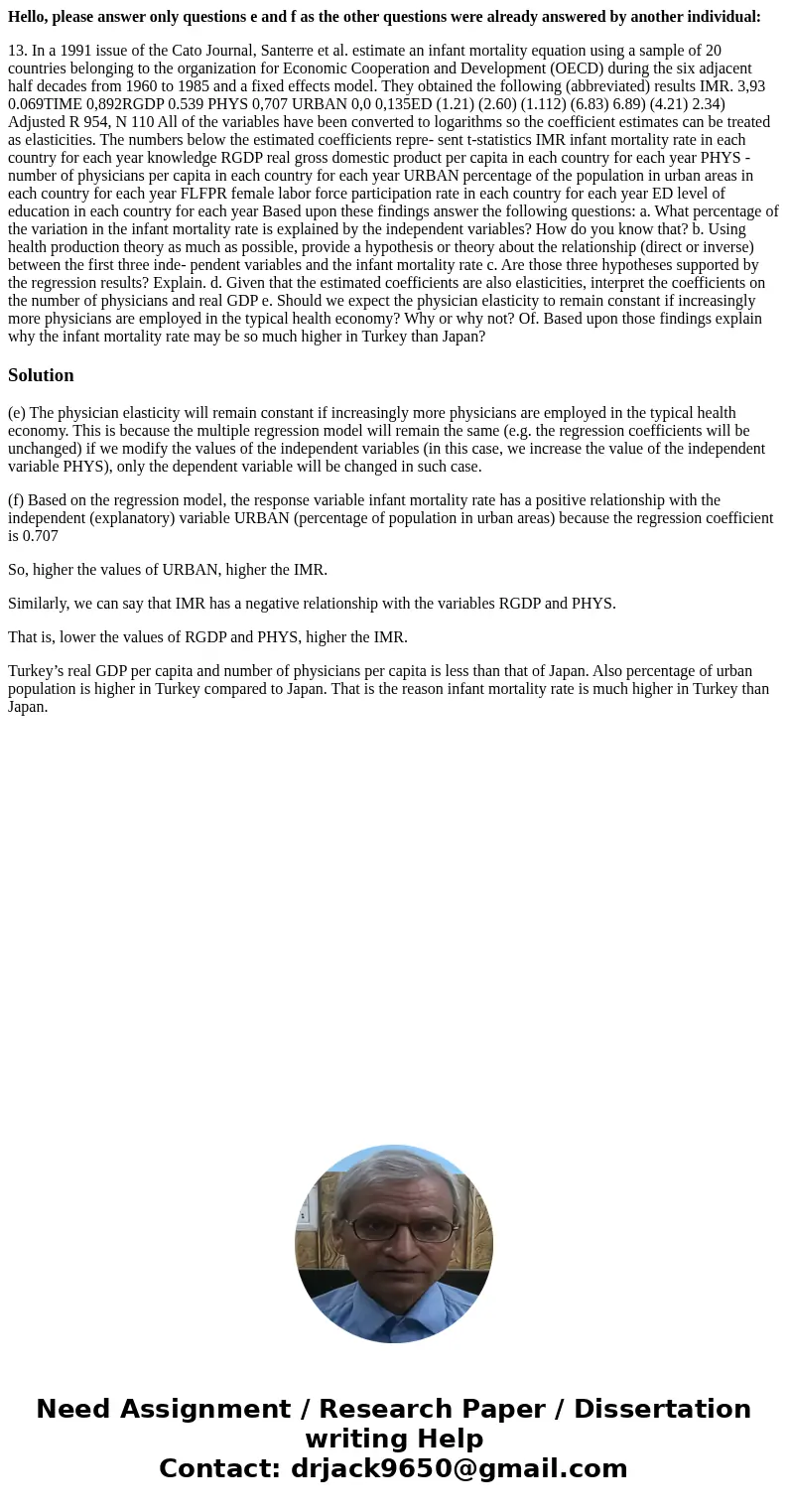Hello please answer only questions e and f as the other ques
Hello, please answer only questions e and f as the other questions were already answered by another individual:
13. In a 1991 issue of the Cato Journal, Santerre et al. estimate an infant mortality equation using a sample of 20 countries belonging to the organization for Economic Cooperation and Development (OECD) during the six adjacent half decades from 1960 to 1985 and a fixed effects model. They obtained the following (abbreviated) results IMR. 3,93 0.069TIME 0,892RGDP 0.539 PHYS 0,707 URBAN 0,0 0,135ED (1.21) (2.60) (1.112) (6.83) 6.89) (4.21) 2.34) Adjusted R 954, N 110 All of the variables have been converted to logarithms so the coefficient estimates can be treated as elasticities. The numbers below the estimated coefficients repre- sent t-statistics IMR infant mortality rate in each country for each year knowledge RGDP real gross domestic product per capita in each country for each year PHYS -number of physicians per capita in each country for each year URBAN percentage of the population in urban areas in each country for each year FLFPR female labor force participation rate in each country for each year ED level of education in each country for each year Based upon these findings answer the following questions: a. What percentage of the variation in the infant mortality rate is explained by the independent variables? How do you know that? b. Using health production theory as much as possible, provide a hypothesis or theory about the relationship (direct or inverse) between the first three inde- pendent variables and the infant mortality rate c. Are those three hypotheses supported by the regression results? Explain. d. Given that the estimated coefficients are also elasticities, interpret the coefficients on the number of physicians and real GDP e. Should we expect the physician elasticity to remain constant if increasingly more physicians are employed in the typical health economy? Why or why not? Of. Based upon those findings explain why the infant mortality rate may be so much higher in Turkey than Japan?Solution
(e) The physician elasticity will remain constant if increasingly more physicians are employed in the typical health economy. This is because the multiple regression model will remain the same (e.g. the regression coefficients will be unchanged) if we modify the values of the independent variables (in this case, we increase the value of the independent variable PHYS), only the dependent variable will be changed in such case.
(f) Based on the regression model, the response variable infant mortality rate has a positive relationship with the independent (explanatory) variable URBAN (percentage of population in urban areas) because the regression coefficient is 0.707
So, higher the values of URBAN, higher the IMR.
Similarly, we can say that IMR has a negative relationship with the variables RGDP and PHYS.
That is, lower the values of RGDP and PHYS, higher the IMR.
Turkey’s real GDP per capita and number of physicians per capita is less than that of Japan. Also percentage of urban population is higher in Turkey compared to Japan. That is the reason infant mortality rate is much higher in Turkey than Japan.

 Homework Sourse
Homework Sourse